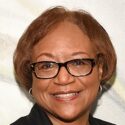 Duke University in Durham, California, hired its first Black faculty member in 1966. Over the next two decades, progress in increasing the number of Black faculty members moved at a snail-like pace. But over the past 25 years, Duke University consistently has made an effort to increase the number of Black faculty on campus. In 1988 there were 31 Black faculty at Duke. At that time, the university established a five-year plan called the Black Faculty Initiative that had a goal of more than doubling the number of Blacks teaching at Duke. But the initiative came up far short of its goals. By 1994 there were 40 Black faculty members.
Duke University in Durham, California, hired its first Black faculty member in 1966. Over the next two decades, progress in increasing the number of Black faculty members moved at a snail-like pace. But over the past 25 years, Duke University consistently has made an effort to increase the number of Black faculty on campus. In 1988 there were 31 Black faculty at Duke. At that time, the university established a five-year plan called the Black Faculty Initiative that had a goal of more than doubling the number of Blacks teaching at Duke. But the initiative came up far short of its goals. By 1994 there were 40 Black faculty members.
In 1994 the university embarked on a second program, the Strategic Plan for Black Faculty Development with the goal of doubling the number of Black faculty over the next decade. The plan was backed up with money that could be used as an incentive to attract Black faculty to Duke. By 2001 there were 77 Black faculty at the university and the goals of the Strategic Plan were reached by 2003. By 2010, Duke reached its highest number of Black faculty with 143. Today there are 138. Blacks now make up 4.25 percent of Duke’s total faculty.












